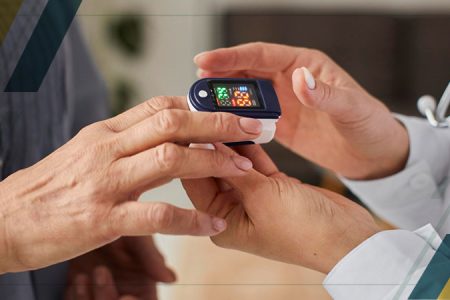Continuous Glucose Monitoring (CGM) systems have revolutionized the way individuals with diabetes monitor their glucose levels. These innovative devices provide continuous and real-time glucose readings, offering valuable insights into glucose trends and helping users make informed decisions about their diabetes management. Let’s learn more about it.
What is a Continuous Glucose Monitoring System?
Continuous glucose monitoring (CGM) involves using a device that automatically tracks your blood glucose levels, commonly known as blood sugar, both day and night. With CGM, you can see your blood glucose levels in real-time and track changes over hours or days, allowing you to identify trends.
Monitoring your blood glucose levels in real time enables you to make informed decisions about your diet, physical activity, and medications. Maintaining blood glucose levels within your target range can help prevent other health complications associated with diabetes.
How Does Continuous Glucose Monitor Work?
A continuous glucose monitor (CGM) works by estimating your glucose level and tracking it over time.
A CGM is composed of three primary components. Firstly, a small sensor is inserted under the skin, often on the belly or arm, and secured with an adhesive patch. These sensors, either disposable or, in some cases, implantable, estimate glucose levels in the fluid between cells, closely mirroring blood glucose levels. Depending on the type, sensors typically require replacement every few weeks.
The second part of the CGM is a transmitter. This transmitter wirelessly sends the glucose information to the third part, which is a software program. This program can be stored on a smartphone, an insulin pump, or a separate device called a receiver.
Advantages and Disadvantages of Continuous Glucose Monitoring System
CGM systems have several pros and cons. Here are the key points to consider:
Pros:
- Real-time monitoring: CGM systems provide continuous and real-time glucose level readings, enabling users to monitor their levels throughout the day and night.
- Trend analysis: CGM systems track glucose trends over time, allowing users to identify patterns and make informed decisions about their diabetes management.
- Alerts and alarms: CGM systems can be set to provide alerts and alarms when glucose levels are too high or too low, prompting users to take prompt action to prevent complications.
- Improved glycemic control: CGM systems have been shown to help improve glycemic control, leading to better management of diabetes and potentially reducing the risk of long-term complications.
- Convenience: CGM systems eliminate the need for frequent finger-stick tests, offering a more convenient and less invasive way to monitor glucose levels.
Cons:
- Cost: CGM systems can be expensive, and the cost may not be covered by insurance for everyone, posing a financial burden for individuals and families.
- Calibration: Some CGM systems require regular calibration with finger-stick tests to ensure accuracy, which can be inconvenient.
- Accuracy: While CGM systems have improved, there can still be variations in accuracy compared to traditional blood glucose meters.
- Skin irritation: Some users may experience skin irritation or allergic reactions at the site of sensor insertion.
- Learning curve: Using a CGM system may require a learning curve to understand the device, interpret the data, and make appropriate adjustments to diabetes management.
It’s important to note that the specific pros and cons may vary depending on the CGM system and individual preferences. Consulting with healthcare professionals can help determine if a CGM system is suitable and beneficial for an individual’s diabetes management.
Do Continuous Monitors Replace Traditional Blood Tests?
Continuous Glucose Monitoring (CGM) systems do not replace traditional blood tests. While CGM systems provide continuous glucose readings, they may still require occasional calibration with finger-stick blood glucose tests to ensure accuracy. Calibration helps align the CGM readings with actual blood glucose levels. Additionally, finger-stick tests may still be needed to verify the accuracy of CGM readings, especially if there are doubts about the readings, changes in insulin dose, or if the CGM gives a warning alert. Traditional blood tests, such as finger-stick tests, remain important for confirming and cross-checking glucose levels.
How Much Does a CGM Cost?
The cost of a Continuous Glucose Monitoring (CGM) system can vary significantly depending on factors such as the specific brand, insurance coverage, and location. Here’s an overview of some general cost considerations:
- Dexcom G6: The approximate cost breakdown for a Dexcom G6 system is around $388.14 for one carton. (INR 5600/piece)
- FreeStyle Libre: Majority of customers pay under $40 per month for the FreeStyle Libre 2 sensor. Actual costs to patients can vary depending on insurance coverage.
- Nutrisense: At Nutrisense, the cost of a CGM ranges from $225 to $299 per month, depending on the chosen program.
Future Scenario
Scientists are currently conducting clinical trials to test new and improved types of continuous glucose monitoring systems. This technology is a crucial component of researchers’ efforts to develop an artificial pancreas, which aims to replicate the body’s natural process of insulin control.
